Digital Board for Teaching Price in India
Digital Board for Teaching Price in India, In today’s rapidly digitizing education system, digital boards—commonly known as interactive flat panels or smart boards—have emerged as essential tools in transforming traditional classrooms into dynamic, tech-enabled learning environments. From government schools adopting hybrid models to private institutions seeking engagement-driven teaching methods, digital boards are redefining how knowledge is delivered and absorbed.
These boards offer far more than just a replacement for blackboards or projectors. With features like touchscreen interactivity, multimedia integration, online teaching tools, annotation capabilities, and real-time collaboration, they are designed to meet the evolving needs of both teachers and students in the 21st-century classroom.
However, before adopting this technology, stakeholders such as educators, school administrators, and edtech decision-makers must navigate a wide price spectrum and evaluate features carefully. The cost of a digital board in India varies significantly depending on its size, touch capacity, software compatibility, and brand. Some boards cater to basic teaching requirements, while others are equipped for advanced collaborative and AI-powered learning.
This guide breaks down the typical price ranges, key features, and factors influencing the cost of digital boards in India—helping you choose the right solution that balances your educational goals with budget constraints.
What is a Digital Board?
A digital board, also known as an Interactive Flat Panel (IFP) or smart board, is a modern, touchscreen-enabled display system designed to enhance teaching and learning in classrooms. It enables teachers and students to engage with digital content directly on the screen using touch gestures, styluses, or smart pens. By combining the capabilities of a computer, projector, and whiteboard into one device, it effectively replaces traditional blackboards, chalks, and projectors—bringing smart education to life. (Digital Board for Teaching Price in India)
Core Features of a Digital Board:
- Interactive Writing and Annotation:
Teachers can write, draw, highlight, and erase content just like on a whiteboard—only digitally. Handwritten notes can be saved, edited, or shared instantly. - Multimedia Integration:
Seamlessly integrates audio-visual materials like videos, PowerPoint presentations, animations, simulations, and interactive quizzes to make lessons more engaging. - Internet Connectivity:
Access to online resources, real-time updates, and educational platforms through built-in Wi-Fi or LAN, allowing teachers to stream content or download materials on the go. - Cloud-Based Learning Apps:
Most premium digital boards support apps such as Google Classroom, Zoom, Microsoft Teams, YouTube, and other LMS tools, making remote and hybrid learning smoother. - Collaborative Learning Tools:
Multiple students can interact with the board at once, enabling group problem-solving, brainstorming, and project presentations—encouraging active participation.
Price Range of Digital Boards in India (2025)
The cost of digital boards in India can vary greatly depending on a few key factors. Here’s a breakdown of what influences pricing:
Key Factors Influencing the Price:
- Screen Size:
Ranges from 55 inches (ideal for small classrooms or meeting rooms) to 86 inches or more (for larger classrooms or auditoriums). Bigger screens naturally come at a higher cost. - Touch Points:
Boards with higher touch-point capability (e.g., 64-point touch) allow more users to interact simultaneously, which is ideal for group work and is usually priced higher than basic 20–30 point touch models. - Resolution & Display Quality:
4K Ultra HD panels are more expensive than Full HD ones, but they offer sharper visuals, which is crucial for detailed presentations or graphics-rich content. - Software Integration:
Boards with pre-installed education software (like Mannat, Google EDLA-certified Android, or Windows compatibility) and cloud support offer better teaching tools but add to the overall cost. - Build Quality and Hardware Specs:
Premium boards may come with anti-glare screens, dual operating systems (Android + Windows), built-in speakers, and advanced cooling, making them more durable and functional.
Approximate Price Range (As of 2025):
| Specification | Estimated Price Range (INR) |
| 55″ – 65″ Full HD (Basic) | ₹45,000 – ₹85,000 |
| 65″ – 75″ 4K, Mid-Range | ₹90,000 – ₹1,50,000 |
| 75″ – 86″ 4K, Premium (EDLA Certified) | ₹1,60,000 – ₹2,50,000+ |
Note: Prices may vary based on brand, bulk orders, warranty, bundled accessories (like OPS, stylus pens, wall mounts), and after-sales support.
Category Typical Features Price Range (INR)
Entry-Level Boards Basic touchscreen, 4K resolution, Android OS ₹50,000 – ₹75,000
Mid-Range Boards 65″–75″, 20 to 30 touch points, Wi-Fi, annotation software ₹75,000 – ₹1,40,000
Premium Digital Boards 64-point touch, AI tools, Google EDLA, classroom integration ₹1,40,000 – ₹2,50,000+
Factors That Affect Digital Board Pricing
Touch Points:
More touch points mean more users can interact at once.
Example: 64-point touch boards allow group collaboration; 30-point boards are suitable for limited interaction.
Size of the Display:
Common sizes include 65″, 75″, 86″, and 98″. Larger displays cost more but enhance classroom visibility.
Software Ecosystem:
Boards with integrated education software (like Mannat, Google EDLA, etc.) command higher prices.
Build Quality & Brand:
Well-known brands or certified hardware (anti-glare glass, metal body, 4K clarity) are priced higher.
Android vs Windows Integration:
Android boards are more cost-effective; dual OS (Android + Windows) adds flexibility and cost.
Digital Live Solutions: A Standout Example
Digital Live Solutions, a brand featured on YouTube, offers 30-point and 64-point digital boards with real-time demonstrations. Their 64-point model stands out for:
Google EDLA certification (Google Classroom compatibility)
2ms touch response
Advanced handwriting accuracy
Mannat software for education and corporate use
Though they haven’t listed public prices, market estimates suggest:
30-point models: ₹75,000 – ₹1.40 lakh
64-point EDLA models: ₹1.5 lakh – ₹2.5 lakh+
Final Thoughts
Investing in a digital board is not just about price—it’s about choosing a tool that enhances classroom engagement, simplifies teaching, and prepares students for a digital world. While entry-level boards serve the basics, premium models like those from Digital Live Solutions bring smart collaboration, lightning-fast touch response, and integrated AI tools to the table.
If you’re a school, coaching center, or teacher planning to adopt smart boards, always compare based on features, not just cost. And if advanced collaboration and future-readiness matter to you, the premium options are worth the investment.
FAQs
1. What is the average price of a digital board for schools in India?
The average price ranges between ₹90,000 to ₹2,00,000, depending on screen size (65″ to 86″), touch technology (30 or 64 points), resolution (Full HD or 4K), and built-in software like Google EDLA or Mannat.
2. What screen size is ideal for a classroom?
For standard school classrooms, a 75-inch or 86-inch board offers good visibility for all students. Smaller boards (55–65 inches) may suit compact rooms or teacher training spaces.
3. Does the price include teaching software and accessories?
Many premium models include built-in teaching software (e.g., Mannat), OPS systems (Windows PC module), stylus pens, and wall mounts. Always confirm with the vendor if these are bundled or charged separately.
4. Are cheaper models (under ₹1 lakh) reliable for teaching?
Yes, basic models under ₹1 lakh are suitable for lectures and annotations, but may lack advanced features like multi-user interaction, AI tools, or cloud app support found in higher-end models.
5. Can schools get bulk discounts on digital boards?
Yes, most vendors offer bulk purchase discounts for educational institutions. Additionally, some companies provide free installation, training sessions, and extended warranties for schools.
Read more from our blogs:
